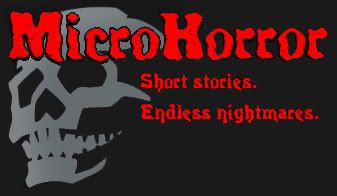 The face of modern occultism has gotten a lot friendlier thanks to authors like Lon Milo Duquette, who adopted the persona of an eccentric rabbi to write The Chicken Qabalah, a slapstick guide to serious mystical traditions. His new book, Enochian Vision Magick, guides readers through the prolific work of Elizabethan mystics Dr. John Dee and Edward Kelley.
The face of modern occultism has gotten a lot friendlier thanks to authors like Lon Milo Duquette, who adopted the persona of an eccentric rabbi to write The Chicken Qabalah, a slapstick guide to serious mystical traditions. His new book, Enochian Vision Magick, guides readers through the prolific work of Elizabethan mystics Dr. John Dee and Edward Kelley.
Despite being charged with the care of two extremely high-maintenance cats while his wife is on vacation, Duquette was happy to offer a few observations on what non-occultists can learn from Aleister Crowley, and on the fabulous life of a career magician (spoiler: the hourly pay isn't as great as you might think).

TB: How do you think perceptions of "occultism" have shifted during your lifetime?
LMD: "Occultism" used to conjure images right out of 1930s B pictures (The Mummy comes to mind). Occultism demanded a turban or a fez, and it was all rather shady. Then in the ‘70s and ‘80s -- with the resurgence of interest in the magick of the Golden Dawn and Aleister Crowley -- came at least the pretense of a certain scholarly legitimacy to the term (this side-by-side with the colorful and not always flattering excesses of the magical subculture).
Even though I've always been comfortable calling myself an occultist, I'm ready to retire the term altogether. Today most people just hear the "cult" in occultism. Do you hear Wayne Dyer or Deepak Chopra calling their stuff occultism? But they are offering classic occult teachings. I vote that we put the words "occult" and "occultism" out to pasture with the other words that once had profound and noble meanings, like "liberalism" and "conservatism" and "socialism."
TB: Do you enjoy any occult-flavored films?
LMD: For the most part, films that try to be overtly occult in nature and style embarrass me. Real-life magick is infinitely more boring and terrifying/mundane and dramatic/tragic and funny/subtle and profound than anything that could be easily captured on film or (more importantly) sold to a film maker or studio. I prefer films that offer me useful insights on the nature of reality and consciousness; Groundhog Day, in my opinion, is the finest comment on the complex nature of the evolution of individual consciousness and what we think of when we use the term "reincarnation." Like Water for Chocolate was perhaps the greatest comment on sex magick ever filmed.
TB: Has being publicly known as a magician resulted in any drawbacks?
LMD: If you're asking if I've ever been persecuted or discriminated against because I make no secret that I'm a practicing magician, the answer is no -- at least nothing has ever come to my attention. If anything, my visibility in this very small universe of interest has opened (and continues to open) many doors of opportunity. For that I am grateful… how many people get a chance to share their thoughts with others who will continue to read them long after one has passed on? It's also helping me in some small measure keep a roof over my head. This may offend some magical purists who think I'm making millions of dollars writing occult books; I'm sorry to disabuse those who may believe this… even with 14 titles in print I don't even make enough royalties each year to reach the U.S. poverty level for my family. I once computed the per-hour compensation for writing one of my books came to less than 68 cents an hour (and that is for royalties paid over period of 5 years).
TB: Even our most instructive books are still infused with humor and personality. Is the dryness and seriousness of other texts an impediment to your enjoyment or appreciation of them?
LMD: Hell yes, it is! That's why I so enjoy Crowley. He keeps me awake by making me look for those 'in' jokes and sarcasms.
I write the way I think... the way I talk to people. It's the only way I can do it. I hear the words as the pour through my fingers to the keyboard. If they don't fall naturally in place as I 'hear' them spoken, then I rewrite them until they do. Corny as it is, my Chicken Qabalah is perhaps the best example of my live teaching style. In my opinion the highest wisdom can only be delivered to the deepest levels of our understanding through humor. I worship Mark Twain, Will Rogers, and George Carlin.
TB: In The Chicken Qabalah you seemed to anticipate some hostility concerning your use of a Jewish, and even rabbinic, voice. Did this ever manifest?
LMD: No. It never did. There have been a few snobby reviews but no one has ever been truly hostile.
TB: What component of Crowley's thought is most valuable for audiences who would't consider themselves magical?
LMD: The simple "truth" that underlies the magical formula of the New Aeon. Without getting magical at all, that simple truth is realized because of a mutation in human consciousness whereby we all now accept the new reality that our Sun is on all the time. Is it that simple? Yes! We all identify with the Sun (whether we are aware of that fact or not). Now that we know that the Sun stays on all the time, deep down inside we now know that we stay on all the time. The Sun does not die. We do not die.
This new reality spills over into how we view ourselves individually in society. Deep down inside we now know that the individual is the basic unit of society... not the family, not the tribe, not the state, not the nation, not the church... each one of us is an individual Sun (not a planet... not a moon or any other satellite) and the only way for us to now make ourselves proper family members, tribe members, and citizens of our state, nation and church is to first find out who we are and what our duty is to ourselves in this life.
TB: Regarding your new book... Enochian magic seems loaded with grids, tables, linguistic nuances, and formulas that I think many magicians find intimidating in their complexity. How do you combat this reaction as an author and teacher?
LMD: By explaining it to others the way I need to explain it to myself.
TB: When it comes to writing about the results of your own personal magical experiments, you've walked an admirably fine line between candor and restraint. To what extent do you think it's really possible to communicate or "share" those experiences via writing?
LMD: I've given it my best shot. I think the best one can do is tell things as you see them, share your own interpretation and doubts and let the reader chew on that.
Summary only...
 Each week you'll find a new 666-words-or-less story from MicroHorror showcased here on Hermitosis. Hopefully this mysterious vignette by D. Hall will cast a shadow over any lakeside holiday plans you're entertaining:
Each week you'll find a new 666-words-or-less story from MicroHorror showcased here on Hermitosis. Hopefully this mysterious vignette by D. Hall will cast a shadow over any lakeside holiday plans you're entertaining:






















